Community
October 4, 2017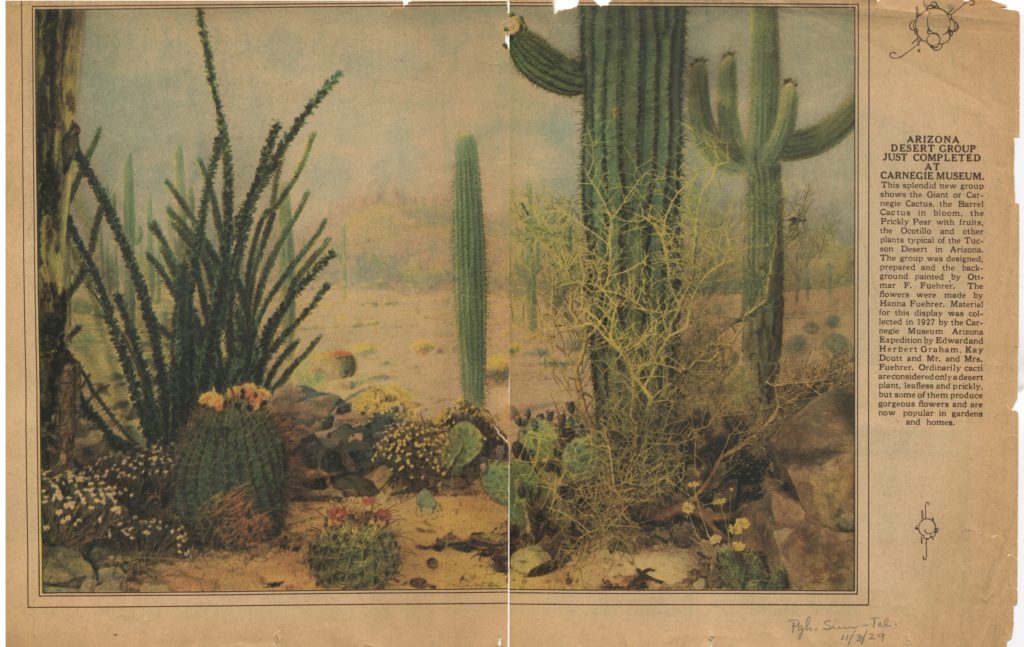
Press on the dioramas shows how the museum promoted them and how they were received by the community. The Pittsburgh Sun Telegraph, also known as the Sun-Telly, was an evening paper eventually bought by the Pittsburgh Post-Gazette in the 1960s. This full page spread about the opening of the new diorama in 1929 indicates the degree to which these exhibits mattered to the Pittsburgh public.
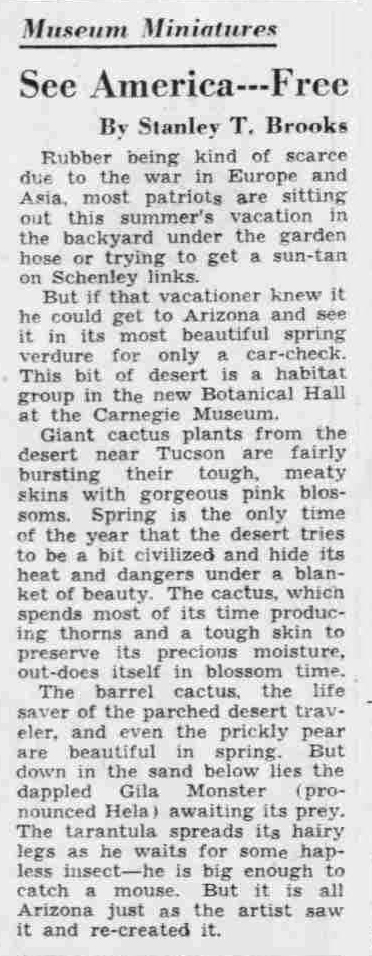

In 1944, in his recurring “Museum Miniatures” column in the Pittsburgh Post-Gazette, Stanley T. Brooks twice described the “new” botanical hall (after the 1942 renovation, completed with help from the Works Progress Administration) and how it might transport Pittsburghers who can’t travel to these locations.[2] Framing the dioramas very specifically in relation to both artistic and documentary processes, he proclaims: “Nature has not been improved upon but much of her beauty has been captured…” and that the location appears “…just as the artist saw it and re-created it.”
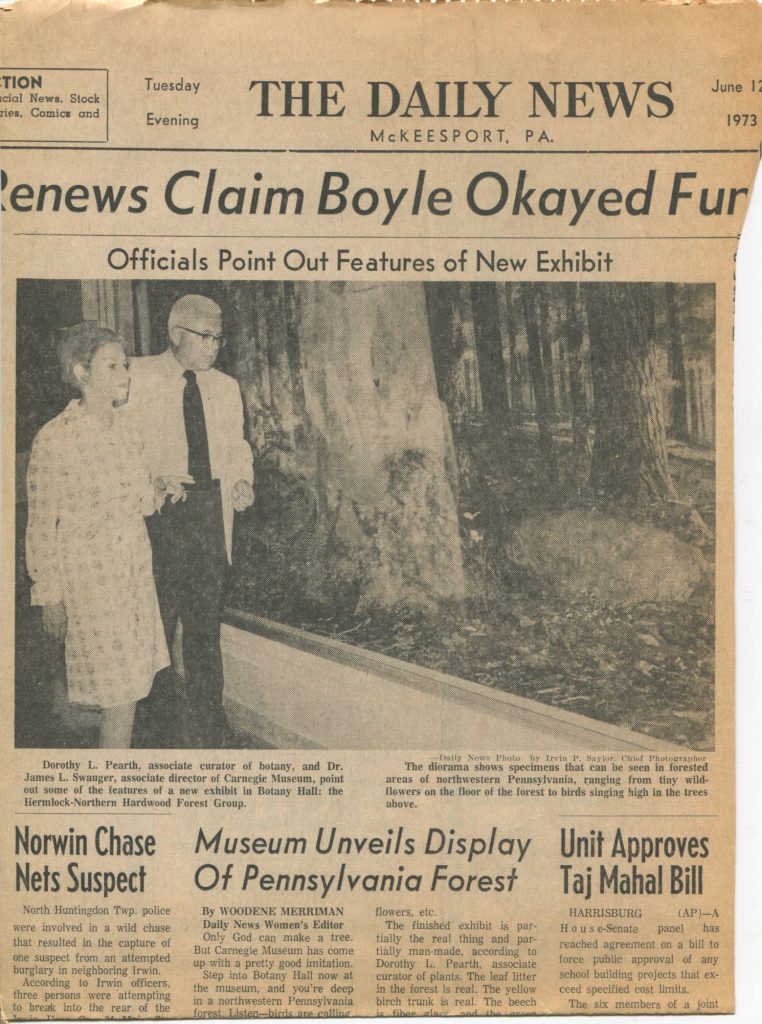
This 1973 article about the opening of the Hemlock-Northern Hardwood Forest Group (written by the Women’s Editor) notes the presence of real plant material inside, and the bird sounds that were played during the opening.
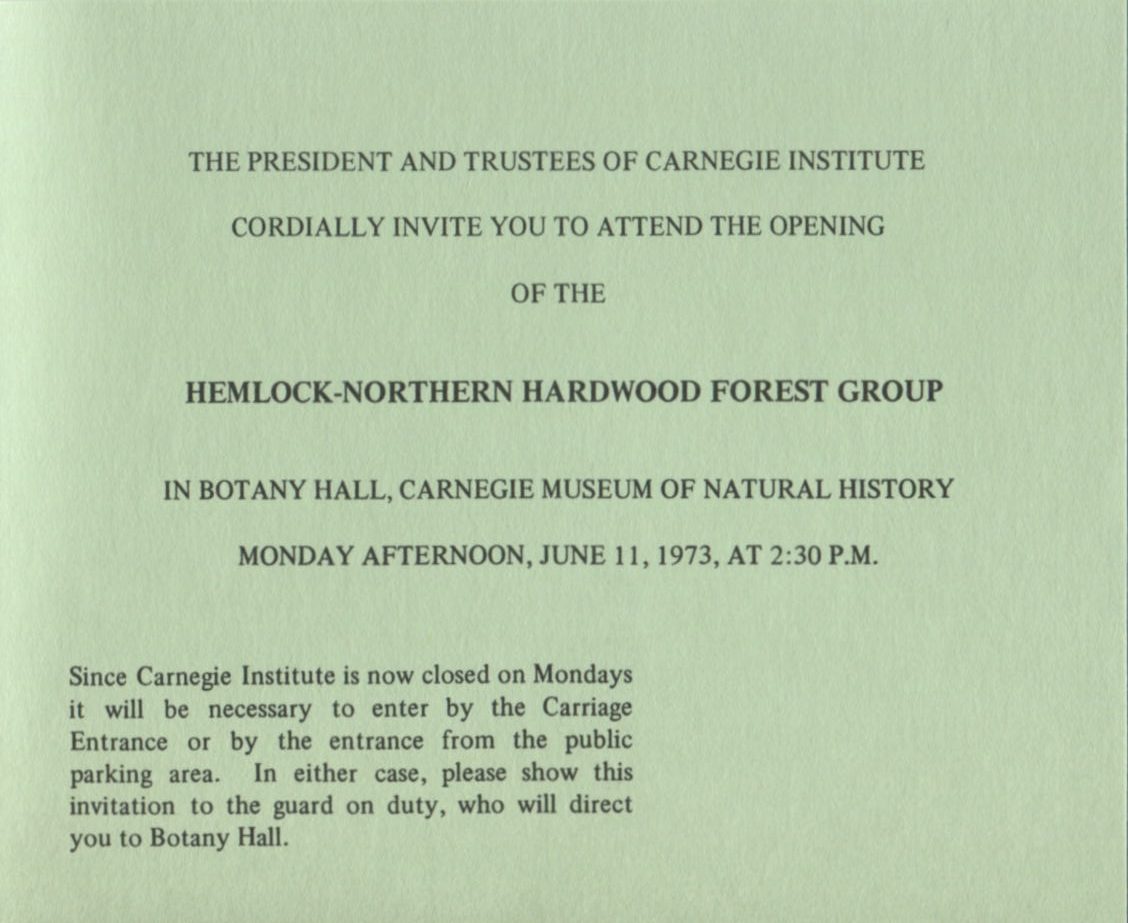
Botany Hall is the product of a Pittsburgh network of botanical-cultural philanthropy, driven in key ways by powerful Pittsburgh women. For the first round of diorama construction, museum director Andrey Avinoff, who was known for being an artist-scientist in his own right, and was a close colleague of Jennings, worked with Rachel Hunt (wife of Roy Hunt of the Alcoa Corporation, and founder of the Hunt Institute for Botanical Documentation) to raise money.[1] Later dioramas were also supported financially by organizations such as the Pittsburgh Garden Club, the Western Pennsylvania Unit of the Herb Society of America, and the Botanical Society of Western Pennsylvania. All the dioramas therefore were in part the projects of local groups who saw them as expressions of their work as plant enthusiasts. These groups were run by upper class white women who enacted their agency and social power in this space. Botany Hall was also home to one of the first and only female curators at the museum, Dorothy Pearth.
These photographs are of the 1966 opening of the Lake Erie/Presque Isle group. It is important to note that Botany Hall was in some ways a space created by and for women of means and leisure time, and we can note the total absence of women of color. While these women were able to carve out a space here in which to exercise social agency, it was perhaps a limited kind of agency somewhat predicated on the social status of their husbands, and their adherence to appropriately female topics. Botany has long been more open than other sciences to women, perhaps because of its association with flowers, gardening, beauty, aesthetics, food, and textiles.

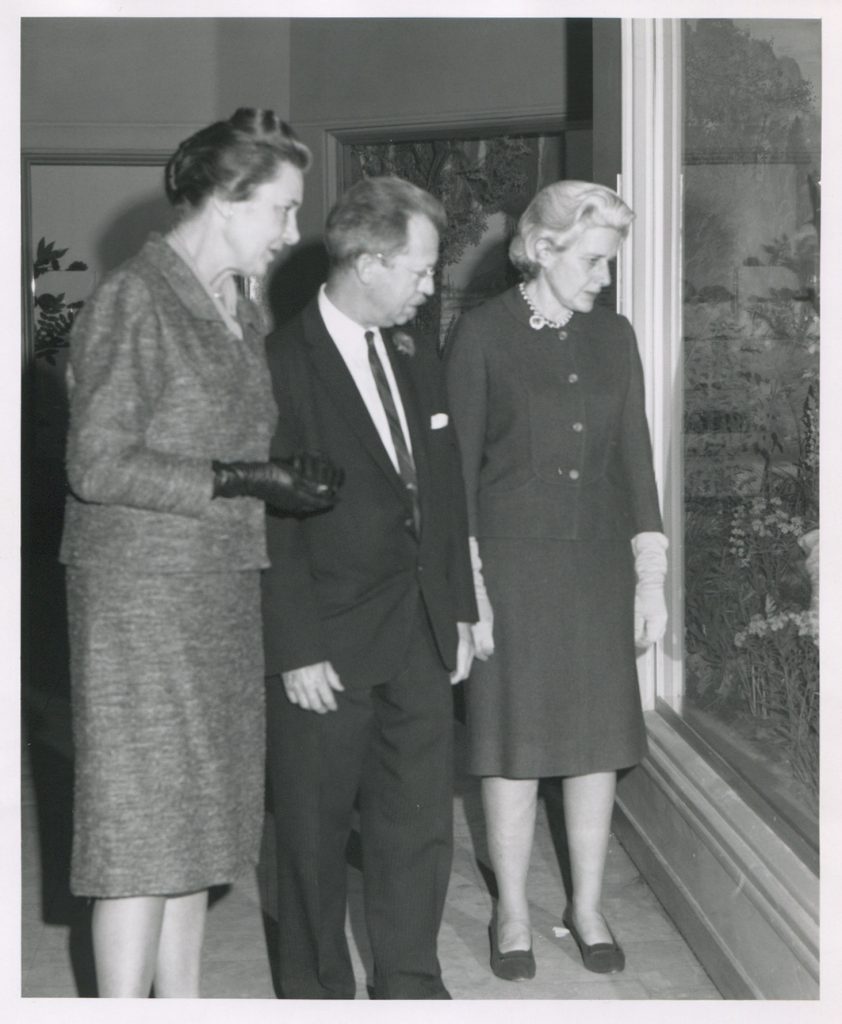
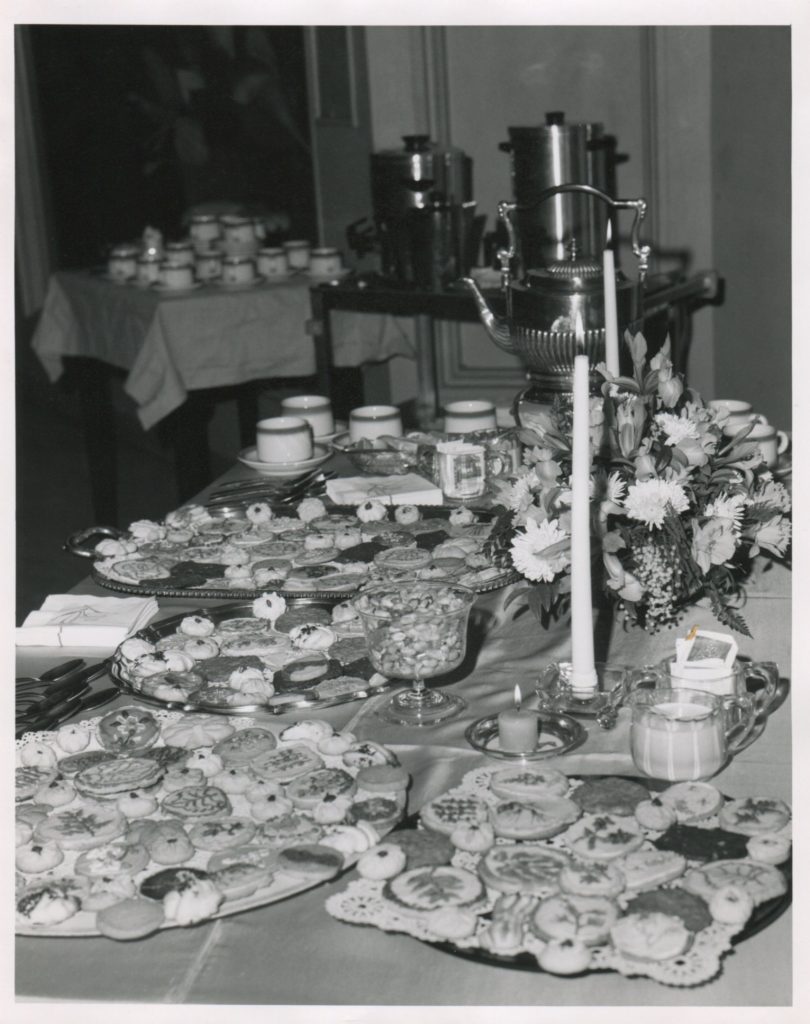
Leslie Rose collaborated with us as part of her museum studies internship at the University of Pittsburgh. For her research, she chose to focus on the role of women in the history of Botany Hall, and created a research project that delves further into these issues.
Women of Science: Working Women of CMNH’s Botany Hall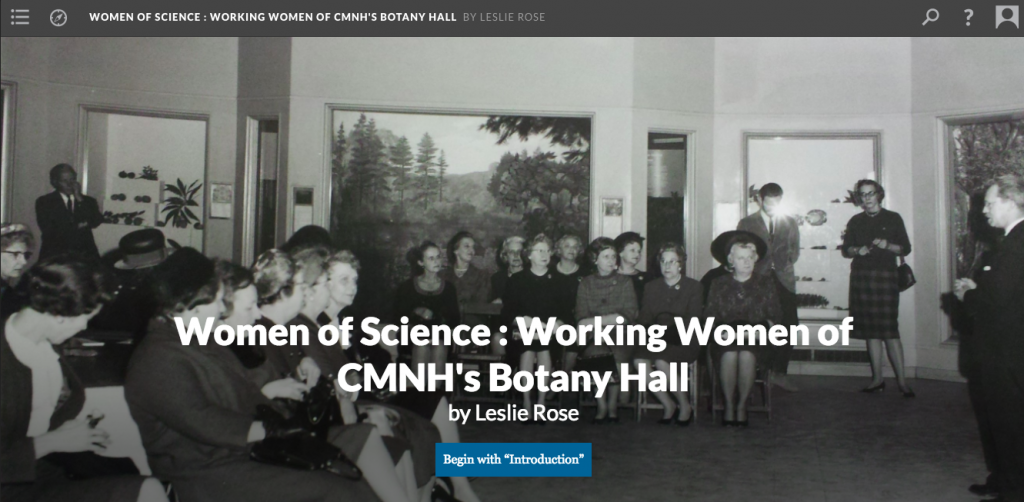
[1] Archives Service Center, Folder 6.21, Garden Club of Allegheny County
[2] The renovation is described by museum director Andrey Avinoff in “The New Botanical Hall: A Revolutionary Change in the Museum’s System of Display,” Carnegie Magazine, 1942, 273.